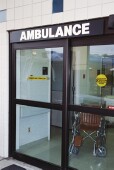
THURSDAY, Aug. 16 (HealthDay News) — Every year in the United States, nearly 450 people die and more than 2,000 people are hospitalized following accidental carbon monoxide poisoning, a new study shows.
Another 20,000 people end up in the emergency room annually due to unintentional exposure to this colorless, odorless, tasteless gas that can be fatal when inhaled. Although women and children account for most non-lethal cases of these poisonings, 79 percent of those who die are men because they more often use fuel-burning tools or appliances, the U.S. Centers for Disease Control and Prevention study found.
The study authors added that more awareness and education is needed on carbon monoxide poisoning and how to prevent it.
The study found that so-called disaster-related carbon monoxide poisoning is a particular concern. Following a review of existing research, the study authors found that over the course of 19 years, 75 deaths and nearly 2,000 nonfatal disaster-related carbon monoxide poisonings occurred.
But, the researchers said, these figures probably underestimate the toll of carbon monoxide exposure during disasters such as storms due to misdiagnosis, under-reporting of cases and limitations of available research.
Generators were involved in most cases of carbon monoxide poisonings. About two-thirds of the fatal cases occurred when people used generators indoors or in a basement, the researches said.
The carbon monoxide given off by a typical portable generator is equal to that of six idling automobiles, the researchers said. They warned that generators placed in attached garages or near open doors, windows or air conditioning vents could still put people at risk for carbon monoxide poisoning. The CDC advises residents to keep generators at least 20 feet away from any home.
“Pre-disaster risk communication might result in better public health effectiveness in reducing disaster-related [carbon monoxide] exposures, because most cases occur within days of event onset, and most natural disasters and subsequent high-risk behaviors … are quite predictable,” the study authors said.
Indoor use of charcoal grills is also a major source of disaster-related carbon monoxide exposure, the researchers found.
“It has been suggested that persons of Asian, Middle Eastern or African origins or persons from warmer climates where solid-fuel burning indoors for cooking or heating purposes is common might be inclined to use charcoal briquettes or grills indoors,” the study’s authors said. “Multilingual education or warning materials distributed with the sales of generators and charcoal bags may be helpful in targeting minority populations and reducing the risk of [carbon monoxide] poisoning.”
The study was published Aug. 16 in the American Journal of Public Health.
More information
The U.S. Centers for Disease Control and Prevention provides more on carbon monoxide poisoning.

